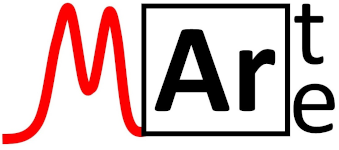
Teléfono: +34 976 765 500 ext 142156
Email: lrello@salud.aragon.es
Dirección: c/Padre Arrupe sn, Hospital Universitario Miguel Servet, S° Bioquímica Clínica – Zaragoza (Spain)
SOBRE MÍ
PUBLICACIONES
2023
García-Poyo, M. Carmen; Bérail, Sylvain; Ronzani, Anne Laure; Rello, Luis; García-González, Elena; Nakadi, Flávio V.; Aramendía, Maite; Resano, Javier; Resano, Martín; Pécheyran, Christophe
Cu fractionation, isotopic analysis, and data processing via machine learning: new approaches for the diagnosis and follow up of Wilson's disease via ICP-MS Artículo de revista
En: J. Anal. At. Spectrom., vol. 38, iss. 1, pp. 229-242, 2023.
@article{D2JA00267A,
title = {Cu fractionation, isotopic analysis, and data processing via machine learning: new approaches for the diagnosis and follow up of Wilson's disease via ICP-MS},
author = {M. Carmen García-Poyo and Sylvain Bérail and Anne Laure Ronzani and Luis Rello and Elena García-González and Flávio V. Nakadi and Maite Aramendía and Javier Resano and Martín Resano and Christophe Pécheyran},
url = {http://dx.doi.org/10.1039/D2JA00267A},
doi = {10.1039/D2JA00267A},
year = {2023},
date = {2023-01-01},
urldate = {2023-01-01},
journal = {J. Anal. At. Spectrom.},
volume = {38},
issue = {1},
pages = {229-242},
publisher = {The Royal Society of Chemistry},
abstract = {Information about Cu fractionation and Cu isotopic composition can be paramount when investigating Wilson's disease (WD). This information can provide a better understanding of the metabolism of Cu. Most importantly, it may provide an easy way to diagnose and to follow the evolution of WD patients. For such purposes, protocols for Cu determination and Cu isotopic analysis via inductively coupled plasma mass spectrometry were investigated in this work, both in bulk serum and in the exchangeable copper (CuEXC) fractions. The CuEXC protocol provided satisfactory recovery values. Also, no significant mass fractionation during the whole analytical procedure (CuEXC production and/or Cu isolation) was detected. Analyses were carried out in controls (healthy persons), newborns, patients with hepatic disorders, and WD patients. While the results for Cu isotopic analysis are relevant (e.g., δ65Cu values were lower for both WD patients under chelating treatment and patients with hepatic problems in comparison with those values obtained for WD patients under Zn treatments, controls, and newborns) to comprehend Cu metabolism and to follow up the disease, the parameter that can help to better discern between WD patients and the rest of the patients tested (non-WD) was found to be the REC (relative exchangeable Cu). In this study, all the WD patients showed a REC higher than 17%, while the rest showed lower values. However, since establishing a universal threshold is complicated, machine learning was investigated to produce a model that can differentiate between WD and non-WD samples with excellent results (100% accuracy, albeit for a limited sample set). Most importantly, unlike other ML approaches, our model can also provide an uncertainty metric to indicate the reliability of the prediction, overall opening new ways to diagnose WD.},
keywords = {},
pubstate = {published},
tppubtype = {article}
}
2022
Navarro-Bielsa, Alba; Abadías-Granado, Isabel; Morales-Callaghan, Ana María; Suso-Estívalez, Catalina; Povar-Echeverría, Marina; Rello, Luis; Gilaberte, Yolanda
Experience with Cutaneous Manifestations in COVID-19 Patients during the Pandemic Artículo de revista
En: J Clin Med, vol. 11, no 3, 2022, ISSN: 2077-0383.
@article{pmid35160051,
title = {Experience with Cutaneous Manifestations in COVID-19 Patients during the Pandemic},
author = {Alba Navarro-Bielsa and Isabel Abadías-Granado and Ana María Morales-Callaghan and Catalina Suso-Estívalez and Marina Povar-Echeverría and Luis Rello and Yolanda Gilaberte},
doi = {10.3390/jcm11030600},
issn = {2077-0383},
year = {2022},
date = {2022-01-01},
journal = {J Clin Med},
volume = {11},
number = {3},
abstract = {After the beginning of the SARS-CoV-2 pandemic, our dermatology department created a multidisciplinary unit to manage patients with cutaneous manifestations associated with COVID-19. With the objective of identifying skin lesions in patients with suspected COVID-19 and evaluating possible associations with systemic involvement, other infectious agents and coagulation disorders, we carried out a prospective observational study that included all patients that attended our COVID-19 dermatology clinic with a multidisciplinary protocol. A total of 63 patients (mean 34.6 years) were enrolled between May 2020 and February 2021. Overall, 27 patients (42.9%) had a positive COVID-19 test, and 74.6% had COVID-19 clinical signs. The most common skin lesion was maculopapular rash (36.5%), predominantly seen in male (54.2%) and older patients (42 vs. 30 years), followed by chilblain-like lesions (20.6%) in younger patients (13.9 vs. 20.9 years) who were predominantly barefoot at home (69.2%); these patients exhibited a tendency towards a negative COVID-19 test. A total of 12 patients (19.1%) had positive serology for herpesvirus 6 (IgM or IgG). We conclude that the COVID-19-associated skin lesions we observed were similar to those previously described. Questions as to the underlying mechanisms remain. Interferon, possibly aided by cold exposure, may cause perniosis-like lesions. Other cutaneous manifestations were similar to those caused by other viruses, suggesting that SARS-CoV-2 may reactivate or facilitate other viral infections.},
keywords = {},
pubstate = {published},
tppubtype = {article}
}
2021
Martínez-Morillo, Eduardo; García-García, María; Concha, María Angeles Luengo; Varas, Luis Rello
Evaluation of a new equation for estimating low-density lipoprotein cholesterol through the comparison with various recommended methods Artículo de revista
En: Biochem Med (Zagreb), vol. 31, no 1, pp. 010701, 2021, ISSN: 1846-7482.
@article{pmid33380888,
title = {Evaluation of a new equation for estimating low-density lipoprotein cholesterol through the comparison with various recommended methods},
author = {Eduardo Martínez-Morillo and María García-García and María Angeles Luengo Concha and Luis Rello Varas},
doi = {10.11613/BM.2021.010701},
issn = {1846-7482},
year = {2021},
date = {2021-02-01},
journal = {Biochem Med (Zagreb)},
volume = {31},
number = {1},
pages = {010701},
abstract = {INTRODUCTION: The accurate estimation of low-density lipoprotein cholesterol (LDL) is crucial for management of patients at risk of cardiovascular events due to dyslipidemia. The LDL is typically calculated using the Friedewald equation and/or direct homogeneous assays. However, both methods have their own limitations, so other equations have been proposed, including a new equation developed by Sampson. The aim of this study was to evaluate Sampson equation by comparing with the Friedewald and Martin-Hopkins equations, and with a direct LDL method.
MATERIALS AND METHODS: Results of standard lipid profile (total cholesterol (CHOL), high-density lipoprotein cholesterol (HDL) and triglycerides (TG)) were obtained from two anonymized data sets collected at two laboratories, using assays from different manufacturers (Beckman Coulter and Roche Diagnostics). The second data set also included LDL results from a direct assay (Roche Diagnostics). Passing-Bablok and Bland-Altman analysis for method comparison was performed.
RESULTS: A total of 64,345 and 37,783 results for CHOL, HDL and TG were used, including 3116 results from the direct LDL assay. The Sampson and Friedewald equations provided similar LDL results (difference ≤ 0.06 mmol/L, on average) at TG ≤ 2.0 mmol/L. At TG between 2.0 and 4.5 mmol/L, the Sampson-calculated LDL showed a constant bias (- 0.18 mmol/L) when compared with the Martin-Hopkins equation. Similarly, at TG between 4.5 and 9.0 mmol/L, the Sampson equation showed a negative bias when compared with the direct assay, which was proportional (- 16%) to the LDL concentration.
CONCLUSIONS: The Sampson equation may represent a cost-efficient alternative for calculating LDL in clinical laboratories.},
keywords = {},
pubstate = {published},
tppubtype = {article}
}
MATERIALS AND METHODS: Results of standard lipid profile (total cholesterol (CHOL), high-density lipoprotein cholesterol (HDL) and triglycerides (TG)) were obtained from two anonymized data sets collected at two laboratories, using assays from different manufacturers (Beckman Coulter and Roche Diagnostics). The second data set also included LDL results from a direct assay (Roche Diagnostics). Passing-Bablok and Bland-Altman analysis for method comparison was performed.
RESULTS: A total of 64,345 and 37,783 results for CHOL, HDL and TG were used, including 3116 results from the direct LDL assay. The Sampson and Friedewald equations provided similar LDL results (difference ≤ 0.06 mmol/L, on average) at TG ≤ 2.0 mmol/L. At TG between 2.0 and 4.5 mmol/L, the Sampson-calculated LDL showed a constant bias (- 0.18 mmol/L) when compared with the Martin-Hopkins equation. Similarly, at TG between 4.5 and 9.0 mmol/L, the Sampson equation showed a negative bias when compared with the direct assay, which was proportional (- 16%) to the LDL concentration.
CONCLUSIONS: The Sampson equation may represent a cost-efficient alternative for calculating LDL in clinical laboratories.
García-Poyo, M. Carmen; Ronzani, Anne Laure; Frayret, Jérôme; Bérail, Sylvain; Rello, Luis; García-González, Elena; Lelièvre, Bénédicte; Nakadi, Flávio V.; Aramendía, Maite; Resano, Martín; Pécheyran, Christophe
Evaluation of electrothermal vaporization for sample introduction aiming at Cu isotopic analysis via multicollector-inductively coupled plasma mass spectrometry Artículo de revista
En: Spectrochimica Acta Part B: Atomic Spectroscopy, vol. 185, pp. 106306, 2021, ISSN: 0584-8547.
@article{GARCIAPOYO2021106306,
title = {Evaluation of electrothermal vaporization for sample introduction aiming at Cu isotopic analysis via multicollector-inductively coupled plasma mass spectrometry},
author = {M. Carmen García-Poyo and Anne Laure Ronzani and Jérôme Frayret and Sylvain Bérail and Luis Rello and Elena García-González and Bénédicte Lelièvre and Flávio V. Nakadi and Maite Aramendía and Martín Resano and Christophe Pécheyran},
url = {https://www.sciencedirect.com/science/article/pii/S0584854721002639},
doi = {https://doi.org/10.1016/j.sab.2021.106306},
issn = {0584-8547},
year = {2021},
date = {2021-01-01},
journal = {Spectrochimica Acta Part B: Atomic Spectroscopy},
volume = {185},
pages = {106306},
abstract = {A new method for Cu isotopic analysis was developed using a commercially available electrothermal vaporization (ETV) device coupled to multicollector-inductively coupled plasma mass spectrometry (MC-ICP-MS). The method demonstrated potential for the isotopic analysis of microsamples (e.g., 5 μL) in a biological context. For example, Cu isotopic analysis of NIST 3114 (diluted to 1 mg L−1 Cu) using self-bracketing provided average δ65Cu values of 0.00 ± 0.17‰ (2SD},
keywords = {},
pubstate = {published},
tppubtype = {article}
}
García-Poyo, M. Carmen; Pécheyran, Christophe; Rello, Luis; García-González, Elena; Rodríguez, Sharay Alonso; Nakadi, Flávio V.; Aramendía, Maite; Resano, Martín
Determination of Cu in blood via direct analysis of dried blood spots using high-resolution continuum source graphite furnace atomic absorption spectrometry Artículo de revista
En: J. Anal. At. Spectrom., vol. 36, iss. 8, pp. 1666-1677, 2021.
@article{D1JA00155H,
title = {Determination of Cu in blood via direct analysis of dried blood spots using high-resolution continuum source graphite furnace atomic absorption spectrometry},
author = {M. Carmen García-Poyo and Christophe Pécheyran and Luis Rello and Elena García-González and Sharay Alonso Rodríguez and Flávio V. Nakadi and Maite Aramendía and Martín Resano},
url = {http://dx.doi.org/10.1039/D1JA00155H},
doi = {10.1039/D1JA00155H},
year = {2021},
date = {2021-01-01},
journal = {J. Anal. At. Spectrom.},
volume = {36},
issue = {8},
pages = {1666-1677},
publisher = {The Royal Society of Chemistry},
abstract = {The performance of state-of-the-art high-resolution continuum source graphite furnace atomic absorption spectrometry (HR CS GFAAS) instrumentation and four novel devices to produce dried blood spots of perfectly defined volumes is evaluated with the aim of developing a simple, direct method for the determination of Cu in blood samples. In all cases, it is feasible to obtain accurate quantitative information using any of the four devices tested (Mitra, HemaXis DB10, Capitainer qDBS and HemaPEN) via simple external calibration with aqueous standards. One of the main differences in the performance of such devices is related to the blanks obtained, such that HemaXis DB10 and HemaPEN are preferred when abnormally low Cu levels (500 μg L−1 or lower), associated with some diseases, need to be determined. The results prove that accurate values with RSD values below 10% can be achieved for these devices even for such Cu levels, while for Capitainer qDBS and, to a higher extent, for Mitra, blank variations will ultimately increase the uncertainty. It is important to stress that analysis of four real samples using both venipuncture and all the DBS specimens showed a very good agreement. Thus, the approach proposed could be readily applied, such that patients with disorders requiring Cu control can prepare their own samples and submit them via postal mail to labs for HR CS GFAAS direct and fast analysis.},
keywords = {},
pubstate = {published},
tppubtype = {article}
}
